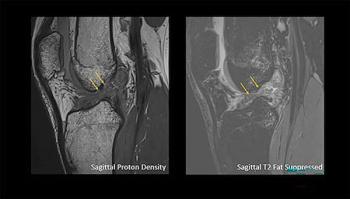
Debate over who controls PACS, IT or radiology, spices SIIM meeting
In truth, the choices may not be all that stark, but there remains a debate over who controls the PACS -- radiology or IT -- and it was played out Saturday between two able advocates.
In truth, the choices may not be all that stark, but there remains a debate over who controls the PACS - radiology or IT - and it was played out Saturday between two able advocates.
Much of what is considered PACS today is already under control of the IT department, said Dr. Paul Chang of the University of Chicago. Further, long-term trends such as the move toward centralized data storage, the growing importance of images to the electronic health record, and the need for tighter integration of all data sources argue for an enterprise approach to the management of medical data, including imaging, he said.
Radiology should be wary about attempts to co-opt its PACS and technology innovations, countered Dr. David Channin of Northwestern University. Radiology can lead the technology curve, as it traditionally has, and help other departments, but if it is to continue to innovate, it must retain control of its own destiny and, especially, its own budget.
Chang, who holds positions in both informatics and radiology at the University of Chicago, argued from the enterprise perspective, essentially that the world is a better place when imaging is part of a larger picture where all specialties share resources and information in a coordinated fashion.
Already, many structural components of the PACS, such as networks, are controlled by IT. In particular, a shared archive can be very cost-effective and much of what we now define as PACS is going to live in that archive, Chang said.
Chang said he has found that much of what his informatics teams is involved in is the management of images throughout the enterprise by other producers and consumers of images. Also, workflow is complex and many in the enterprise want access not just to images, but to other information from other domains as well. This is easier to provide from an overriding entity such as a properly designed and responsive IT structure.
"IT should be at the table because radiology should be at the table," Chang said. "What works in radiology is going to work in pathology too, with some minor variations. It would be foolish to waste that expertise."
To punctuate his points, Channin ascended the dais wearing a green fatigue cap and dark glasses, sporting a big cigar, and speaking with Spanish-accented English.
"We will tell you how many potatoes to plant and grow," Channin deadpanned. "We have excellent healthcare in Cuba, and everyone drives a 1952 Chevy."
"Radiology IT has to be in radiology just as PACS must be in radiology," Channin said. If radiology is under the control of a central authority, it will have to compete with everyone else for technology improvements or upgrades.
"The bottom line is always the bottom line," Channin said. "If your 3D workstation or your PACS upgrade is in the same pool, or should I say cesspool, of capital allocations, you're going to compete for money for innovations with the next laser doodad in the OR."
Radiology is a cash cow for hospitals that helps fund other, money-losing, services, according to Channin. That's alright, he said, because "we are a generous and kind people." But for radiology to continue to generate good returns, it needs to define its own standards (such as DICOM and IHE) and innovate in its own way and at its own pace.
"If radiology doesn't have control, it must coordinate with other systems," Channin said. "They may say to you, as they have to me, that you cannot upgrade your radiology xyz until next August when that will synchronize with another system."
Budgetary authority was a major flashpoint.
"I think it's naïve to think if you control your own little sandbox, you can control your own budget. For most of us it's one bag of money, and I want to be at the table and say my need for PACS is more important and the only way I can do that is if I can demonstrate I am a team player," Chang said.
That's the job of the chair of radiology, who can budget appropriately and who should have budgetary authority for his domain, Channin replied.
Chang said that's the way it used to be, but not how it works now. Today you have to fight for a share of a single pot of money and articulate your needs in terms of the strategic goals of the enterprise, not just of a department.
Channin countered that departments that control their own destiny can increase growth in revenues.
Newsletter
Stay at the forefront of radiology with the Diagnostic Imaging newsletter, delivering the latest news, clinical insights, and imaging advancements for today’s radiologists.




























